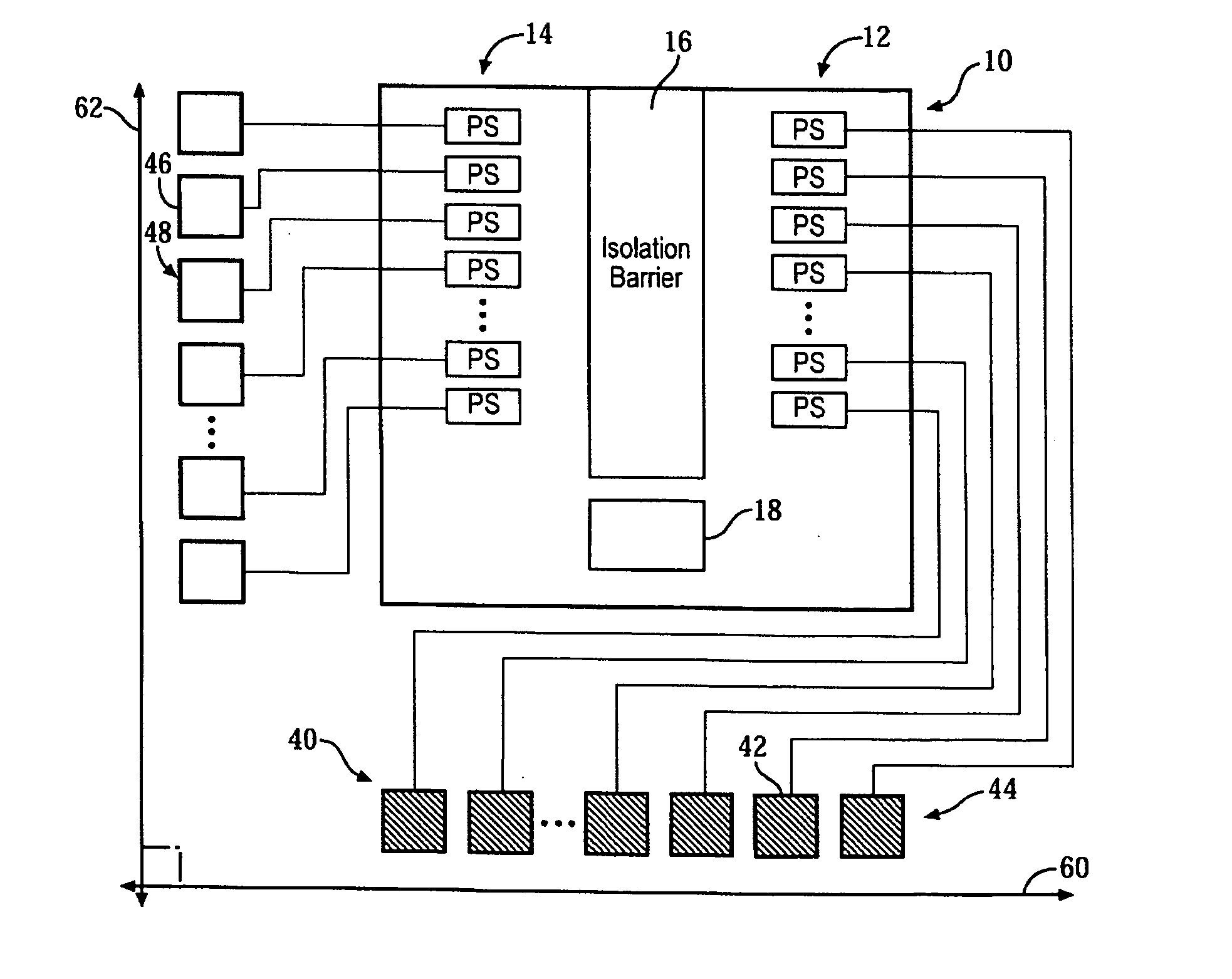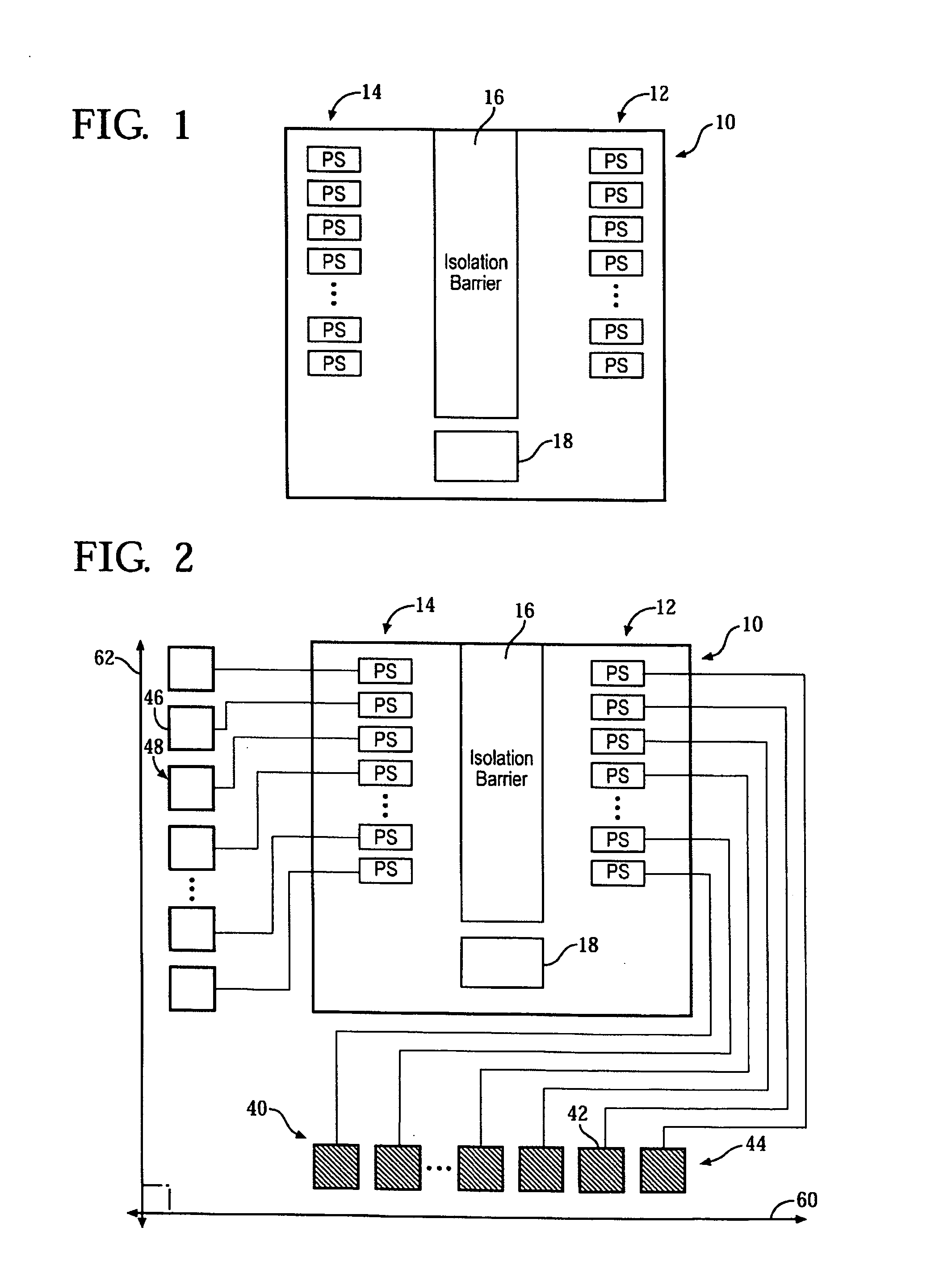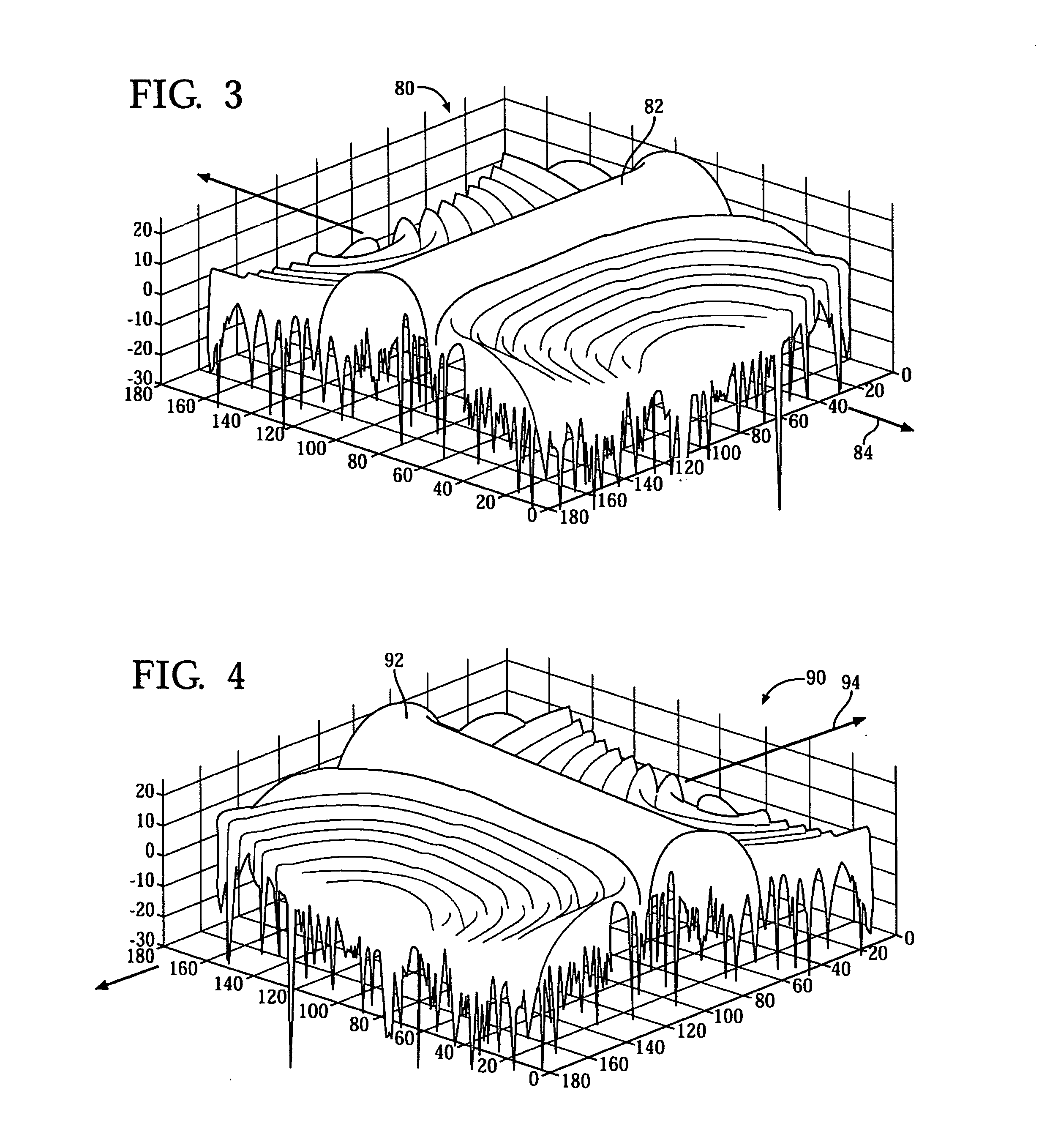3D short range detection with phased array radar
- Summary
- Abstract
- Description
- Claims
- Application Information
AI Technical Summary
Benefits of technology
Problems solved by technology
Method used
Image
Examples
Embodiment Construction
[0018]A microchip for transmitting and receiving radar signals is provided. The microchip can have a plurality of receiving phase shifters and a plurality of transmitting phase shifters. In addition, the microchip can have a plurality of transmitting antenna cells along a first axis and a plurality of receiving antenna cells along a second axis. In some instances, the second axis is orthogonal to the first axis. At least one of the transmitting phase shifters can be linked to each of the transmitting antenna cells and at least one of the receiving phase shifters can be linked to each of the receiving antenna cells.
[0019]An isolation barrier can be present on the microchip and separate the transmitting phase shifters from the receiving phase shifters. The isolation barrier can be constructed by a series of vertical interconnect accesses (vias) through all layers of a multilayer microchip and connect the layers to a ground layer.
[0020]The receiving phase shifters can be grouped as a r...
PUM
 Login to View More
Login to View More Abstract
Description
Claims
Application Information
 Login to View More
Login to View More - R&D
- Intellectual Property
- Life Sciences
- Materials
- Tech Scout
- Unparalleled Data Quality
- Higher Quality Content
- 60% Fewer Hallucinations
Browse by: Latest US Patents, China's latest patents, Technical Efficacy Thesaurus, Application Domain, Technology Topic, Popular Technical Reports.
© 2025 PatSnap. All rights reserved.Legal|Privacy policy|Modern Slavery Act Transparency Statement|Sitemap|About US| Contact US: help@patsnap.com



